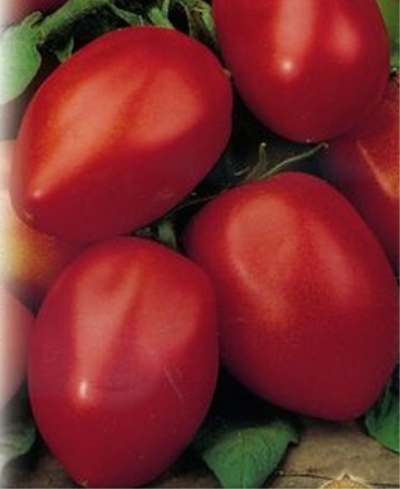
- Authors: Popova L.N., Arinina L.P.
- Year of approval: 2004
- Category: grade
- Growth type: determinant
- Appointment: fresh consumption, for pickling and preserving
- Ripening period: mid-season
- Ripening time, days: 87-116
- Growing conditions: for open ground
- Transportability: Yes
- Marketable fruit yield,%: 84-96%
Tomato Winner is a high-yielding crop that for many years has held a leading position in popularity not only among gardeners, but also among farmers. Due to the formation of medium fruits with juicy and sugary pulp, the variety has a universal purpose, it is successfully used both for preparing fresh salads and for preserving in various forms.
Breeding history
The Pobeditel variety is the result of the painstaking work of Russian breeders and practitioners from the Volgograd Scientific Center. In 2004, the seed material of this variety entered the retail trade and gained massive popularity. A versatile variety that adapts well to different climatic zones. Plants can be grown in various ways, but the unpretentious variety is often planted directly in open beds.
Description of the variety
Tomato Winner belongs to undersized determinant crops with limited height of central stem formation. The size range of the height of an adult plant is from 60 cm to 75 cm. The average leaf plates have a deep green hue and are densely located on the shoots. The inflorescences are complex, the stalks are without articulation. The first cluster is formed above the 8th leaf plate. One bunch is capable of forming up to 8 units of fruit.
Advantages:
unpretentiousness;
the ability to grow in open beds;
high yield;
long storage period;
transportability;
resistance to climatic fluctuations;
immunity to most nightshade diseases;
high taste characteristics;
universal purpose of fruits.
Disadvantages: immediate fruit return.
The main qualities of the fruit
The fruit of the Winner tomato is of medium size and elongated ovoid with a convex tip. Fruit weight varies from 70 to 140 grams. The color at the stage of technical ripeness is bright red. The skin is thin and slightly ribbed. The pulp has a dense and juicy texture. The share of dry matter in tomatoes can be up to 5.5%.
Due to its properties, the fruits have a long wounding period and a high degree of transportability.
Taste characteristics
The fruits of the variety have high taste characteristics. Even gourmets appreciate the rich tomato flavor and sweetish tinge. Tomatoes are successfully used for making tomato juice, ketchup and borsch dressings, and canned whole fruits do not change their integrity and are not susceptible to cracking.
Ripening and fruiting
A mid-ripening tomato is distinguished by an amicable ripening of the crop. The ripening time range is 87 to 116 days.
Yield
Tomato Winner is a high-yielding variety that, under favorable conditions, is able to form up to 10 kg of fruits on a plot of 1 m2. The marketable yield of the crop often reaches 96%.
The timing of planting seedlings and planting in the ground
Despite the unpretentiousness of the culture, it is best to grow tomatoes in a seedling way. Sowing of seed should be carried out in early March in prepared nutrient soil. The seeds must not be buried more than 10 mm. Germination can be increased by creating a greenhouse effect. After the appearance of the first leaves, it is necessary to make a pick.Planting seedlings in open ground is carried out in mid-May, after the threat of frost has passed. Before planting seedlings, it must be hardened at a temperature of at least 15 degrees for 10-15 days.

Growing tomato seedlings is an extremely important process, because it largely depends on whether the gardener can harvest at all. All aspects must be taken into account, from seedbed preparation to planting in the ground.
Landing scheme
The planting density of low-growing bushes should not exceed 4 plants per 1 m2. The planting pattern is 70 cm by 50 cm.

Growing and caring
Due to their unpretentiousness, tomatoes of this variety do not need increased attention to themselves. Caring for them consists of a set of classic activities. The main thing is to water the tomatoes on time, fertilize and remove weeds. Watering the bushes is allowed only with settled water at room temperature. Plants are responsive to fertilization, so they need to be fed at least 3-4 times per season.




A plant needs different micronutrients at each stage of growth. All fertilizers can be divided into two groups: mineral and organic. Folk remedies are often used: iodine, yeast, bird droppings, eggshells.
It is important to observe the rate and period of feeding. This also applies to folk remedies and organic fertilizers.
Disease and pest resistance
A universal high-yielding crop not only pleases with the volume of fruiting, but also has a high resistance to various diseases of the nightshade. However, one should not forget that as a preventive measure, green spaces must be regularly treated with special antiviral drugs.


Growing regions
The universal variety is successfully cultivated in various climatic regions, but the plants feel most comfortable in such areas as Saratov, Astrakhan, Volgograd, on the territory of the Republic of Kalmykia and in the North Caucasus region. In regions with more severe climates, plants can be grown in greenhouse conditions, which will not adversely affect the quantity and quality of the crop.

























































































